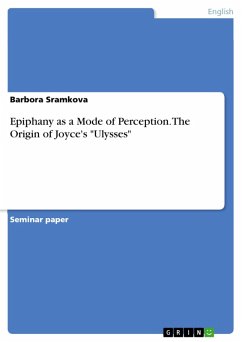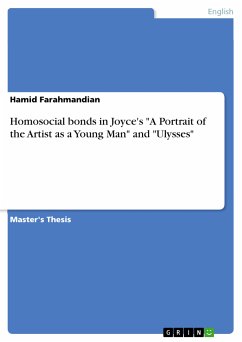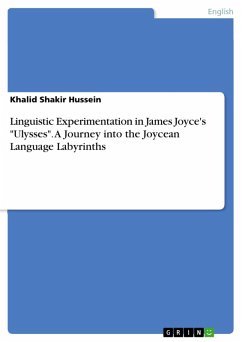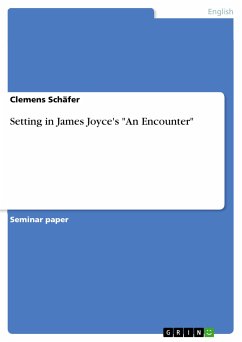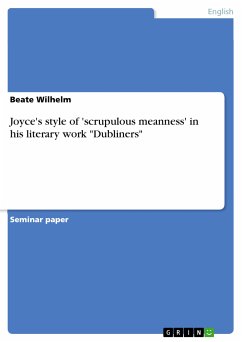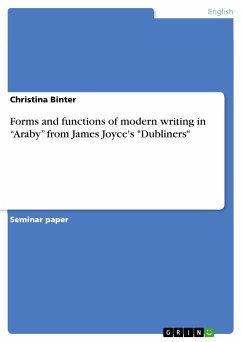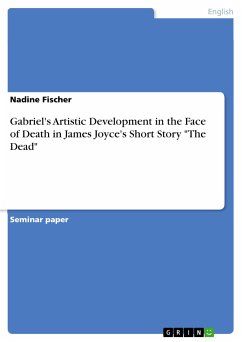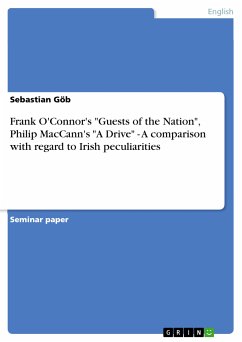Seminar paper from the year 1998 in the subject English Language and Literature Studies - Literature, grade: 1,0, Humboldt-University of Berlin (Institut für Anglistik und Amerikanistik), course: James Joyce's "Ulysses", language: English, abstract: How do writers make their figures perceive the world they inhabit? To answer this question would amount to writing a book along the lines of Franz K. Stanzel's Narrative Situations in the Novel, which is clearly not my ambition. Eve n narrowing the scope down to one writer or even a single book, in the case of Ulysses, it wouldn't make things much easier. But there seems to be a consensus among Joycean scholars that there is one way typical of Joyce, in which fictional characters can achieve an understanding of their experiences. "Epiphany is the name of the game and there is hardly any reader of Joyce who would not be acquainted with this concept in one way or another. Although no invention of Joyce's, the word is today associated primarily with him, and has since enjoyed great popularity exceeding the literary context. In this paper, I will trace the origins of this theory in Joyce's early writing and examine how it can be applied to Ulysses. I see two approaches to some such undertaking. First, there is the explicit theory that Joyce formulated in what came down to us as the fragment Stephen Hero. Using Stephen as a mouthpiece for his own aesthetic theories, Joyce applies Thomistic aesthetic philosophy to everyday perception of the world surrounding his juvenile alter ego. This theory is later expanded and accordingly modified in A Portrait of the Artist as a Young Man. Rather than relating this theory solely to Stephen and following his artistic and philosophic development in Ulysses, I intend to examine moments that correspond with Stephen's aesthetic notions, even where other characters, or, perhaps, no characters at all, are involved. In this attempt, I deem it necessary to draw on Joyce's own collection of Epiphanies, a book not published in Joyce's lifetime, which was, however, later presented to the public, despite the fact that the extant pieces form only a fragment of Joyce's original notes. Stanislaus Joyce remarks: "This collection served him as a sketchbook serves an artist." Should, or could, these sketches be regarded as Joyce's theories put into practice? Some motives from the Epiphanies were incorporated into Ulysses, modified accordingly. Even though the "sketchbook" was exploited to a much greater degree in Stephen Hero and Portrait, the fact that some of the "genuine epiphanies" found their way into Joyce's writing two decades after they had been jotted down, is significant enough for the correspondences to be examined.
Dieser Download kann aus rechtlichen Gründen nur mit Rechnungsadresse in A, B, BG, CY, CZ, D, DK, EW, E, FIN, F, GR, HR, H, IRL, I, LT, L, LR, M, NL, PL, P, R, S, SLO, SK ausgeliefert werden.

